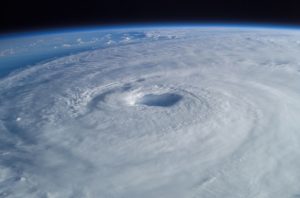
Mother Nature is adding to the chaos of 2020 with three storms churning simultaneously in the Pacific, Caribbean, and the Gulf of Mexico, and their respective arrivals signal the 2020 hurricane season could be more aggressive than usual.
In the Pacific, Hurricane Douglas was upgraded to a Category 3 hurricane Thursday by the National Hurricane Center (NHC), with sustained winds of 120 mph. As of July 23, Douglas is roughly 1,470 miles east-southeast of Hilo, Hawaii, with the NHC forecasting a “gradual weakening” by Friday when it arrives in Hawaii.
In the Caribbean, Tropical Storm Gonzalo made history as the earliest named seventh storm in a season that traditionally begins June 1 and stretches to November 30. Gonzalo is expected to be upgraded to hurricane status and the NHC recorded a system with maximum sustained winds of 65 mph located roughly 910 miles east of the southern Windward Islands. A hurricane watch is now in effect for Barbados and St. Vincent and the Grenadines, and it is uncertain at this point in time if the U.S. mainland will be impacted.
There is also a tropical depression that is slowly gaining strength in the Gulf of Mexico. If this system achieves wind speed of 39 mph, it would be named Tropical Storm Hanna, making it the earliest recorded eighth storm in a hurricane season. NHC forecasters predict Hanna could produce between three to eight inches of rain when it arrives along with the Gulf Coast communities in Texas and Louisiana.
While it is too early to determine what degree of damage the three storms will have to U.S. properties, increased storm activity is not expected to abate. The National Oceanic and Atmospheric Administration (NOAA) predicted this year’s hurricane season has a 60% chance of being “above-normal,” with between 13 and 19 named storms, between six and 10 hurricanes, and between three and six major hurricanes.
What does this mean for the housing market? A recent report by CoreLogic estimated that storm surges from the 2020 hurricane season could wreak havoc on more than 7 million U.S. properties, with a potential of $1.7 trillion in reconstruction costs for single-family homes and $95 billion for multifamily residences. The Insurance Information Institute has stated the average loss per property due to flooding is roughly $45,000, although properties in coastal Texas that were devastated by Hurricane Harvey in 2017 carried an average flood loss of approximately $117,000 per property.
Complicating matters is the potential disappearance of flood insurance from homes that are below the required elevation levels set by the Federal Emergency Management Agency (FEMA). A recent ValuePenguin report determined that more than 74,000 properties sitting below FEMA’s required elevation have National Flood Insurance Program policies that are set to expire later this year. And while he average claim on one of these homes over the past decade was $51,000, non-compliant properties made tens of millions of dollars of claims during nine of the past 10 years.

 DSNews The homepage of the servicing industry
DSNews The homepage of the servicing industry










